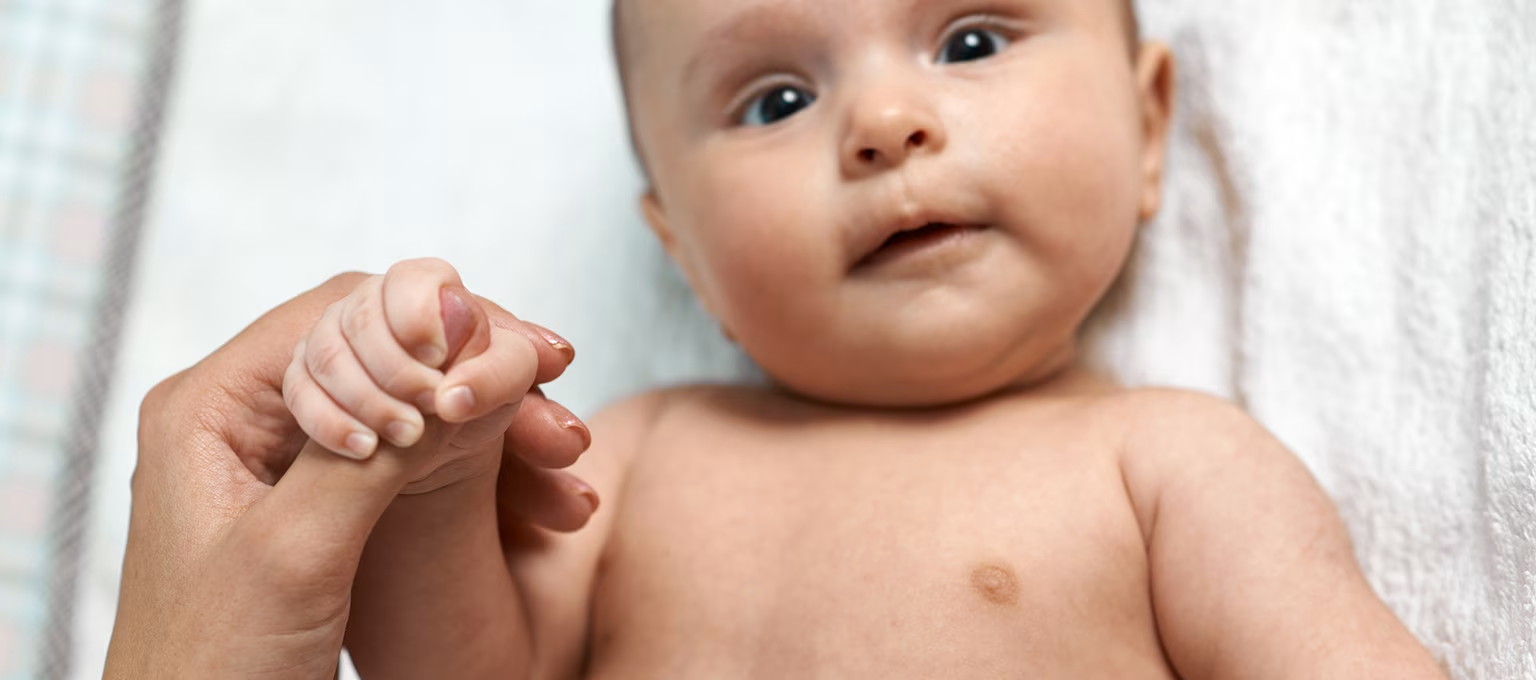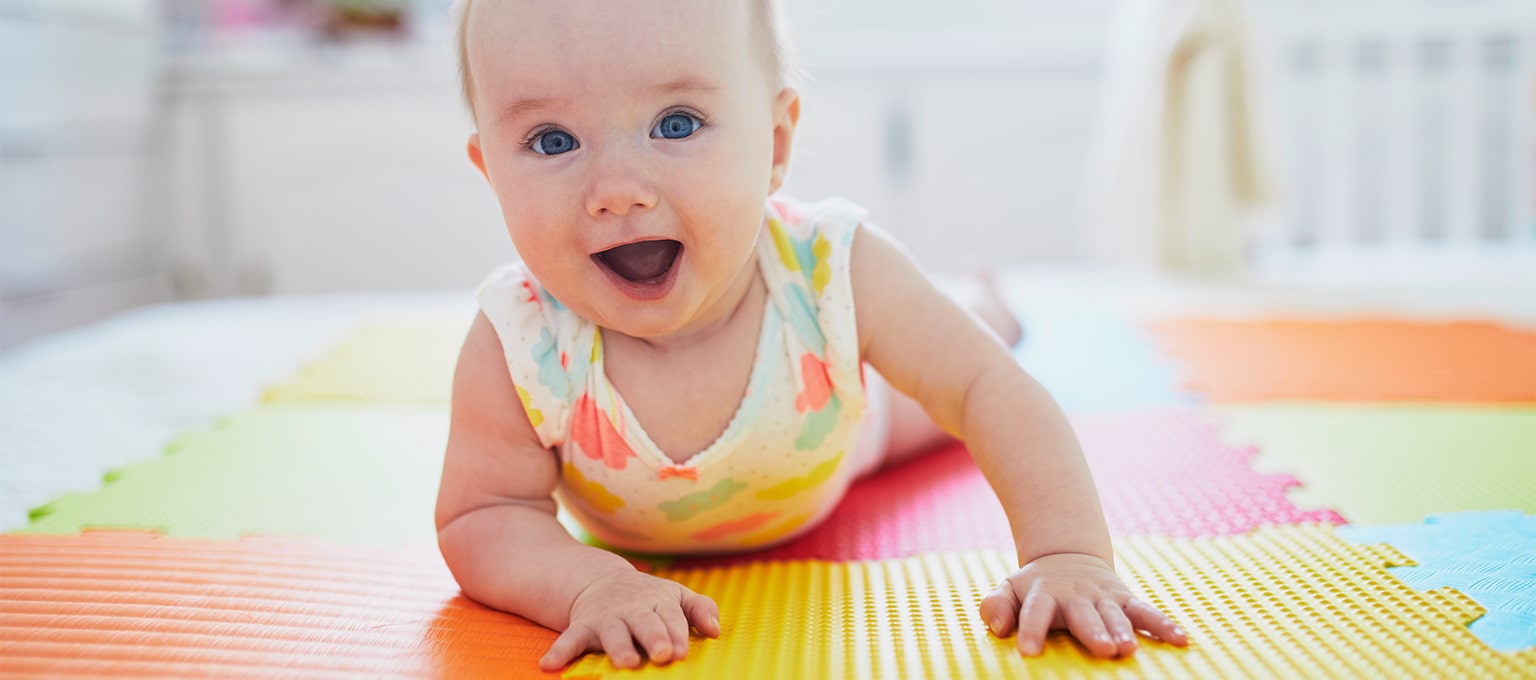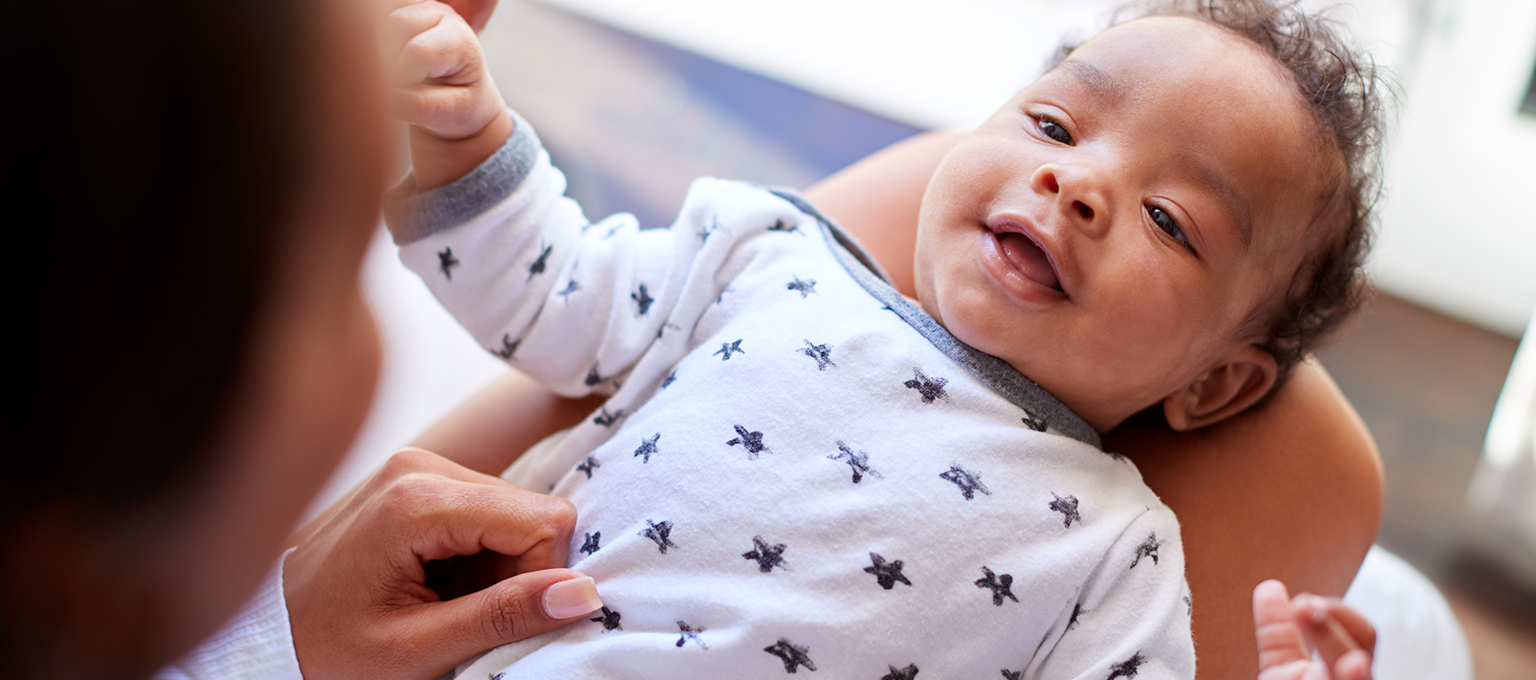
Reflexes in Newborn Babies and Infants


Did you know that many of your newborn’s movements are actually newborn reflexes? These infant primitive reflexes are automatic responses that help babies adjust to life outside the womb. From the rooting reflex, which helps babies find food, to the grasp reflex, which causes tiny fingers to wrap around yours, these involuntary movements play a crucial role in early development.
Your baby is born with several primitive reflexes, each serving a specific purpose. Some, like the sucking reflex, are essential for feeding, while others, such as the Moro reflex, help babies react to sudden movements. Over time, these reflexes fade as your baby gains more control over their body.
What you’ll learn in this article:
Keep reading to learn more about the fascinating newborn reflexes that shape your baby’s early movements and growth.
What Are Baby Reflexes?
Newborn reflexes—also known as primary reflexes, neonatal reflexes, or infant primitive reflexes—are automatic responses that newborns display in reaction to stimuli. These newborn reflexes help infants interact with their environment before they develop voluntary control over their movements. For example, if you place a finger in your baby’s mouth, they will instinctively begin to suck—a behavior known as the sucking reflex. Similarly, when exposed to a bright light, your newborn will automatically close their eyes.
These primary reflexes are essential for survival and neurological development in early life. Unlike learned behaviors, newborn reflexes are involuntary and disappear as the baby’s nervous system matures. Most newborn reflexes begin to fade when they’re around 2 to 3 months old.
While adults also have reflexes, this article focuses on those that are unique to infants.
Rooting Reflex in Babies
Your baby is born with the rooting reflex, or root reflex, which is what helps them find your nipple when breastfeeding for the first time.
To see this “looking-for-the-nipple” reflex in action, simply stroke their cheek or mouth with your finger. They will automatically turn their head toward your hand and may open their mouth in anticipation of the nipple.
At first, your baby may root from side to side when breastfeeding, turning their head toward your nipple and then away, but by 3 weeks old, they’ll likely know to turn in the right direction and position themselves to suck at your nipple. They will also do this with the nipple of a bottle if you're bottle-feeding them.
The newborn rooting reflex usually goes away by the time your little one is 4 to 6 months old as they learn that food will come regularly, and they don’t need to search for the nipple. Your baby will also learn hunger cues and turn away from the nipple or bottle if they’re not hungry.
Baby Development Milestones Watching how your baby grows and develops is an important part of parenthood. Keep track of your little one's progress with our articles!
Sucking Reflex
Your newborn develops the sucking reflex even before they’re born. If you had an ultrasound while you were pregnant, you may have seen your baby sucking on their thumb while still in the womb.
Once your baby is born, they’ll automatically start sucking when your nipple is placed in their mouth or when it touches the roof of their mouth. If you’re giving them formula or expressed breast milk from a bottle, this reflex happens in response to the nipple of the bottle, too.
Sucking is actually a very complex skill for a newborn, as they must breathe and swallow while sucking. So, despite it being a reflex, some babies don’t suck efficiently at first. Over time, they get the hang of it.
After breastfeeding is well-established with your baby, they may use this sucking reflex to soothe themselves by sucking a pacifier or their thumb.
Moro Reflex or Startle Reflex
A reflex you may notice in your baby’s first month is the Moro reflex—a startle response, also known as the startle reflex.
So, what is the Moro reflex in babies? If your baby’s head falls back abruptly or if they’re startled, they’ll respond by throwing their arms and legs outward, extending their neck, and quickly bringing their arms together. They may also cry.
If you’re wondering “When does Moro reflex go away?” This typically happens after about two months.
Tonic Neck Reflex or Fencing Reflex
The tonic neck reflex, also known as the fencing posture, is a pretty simple but funny reflex in newborns. If your baby turns their head to one side, they’ll automatically straighten the arm on the same side, bending the opposite arm, as if they were fencing. En garde!
This reflex can be subtle, so you may not notice it, and, if your baby happens to be crying, they may not exhibit this reflex.
The tonic neck reflex usually disappears completely when babies are about 5 to 7 months old.
Grasp Reflexes
Grasp reflexes in newborns are involuntary movements that play a crucial role in an infant’s early development. These reflexes are indicators of a healthy nervous system and typically diminish as the infant matures. The plantar, Babinski, and palmar grasp reflexes are initially present in infants, while the pincer grasp develops after several months. Read on for more information on these grasp reflexes.
Palmer Grasp Reflex
When you gently stroke the inside of your baby's hand, you'll notice their little fingers instinctively grasp yours! This adorable response is called the palmar grasp reflex, and it's something that babies are born with. This reflex is present at birth and usually disappears by 5 to 6 months of age.
Your baby’s hand grip is quite strong. If you put a rattle in their hand, they’ll likely hold on tight! And there's nothing like the feeling of them curling their fingers around your finger in a vice-like grip.
Just be aware that this is a reflex, and your baby can let go at any time. This means they may drop their rattle or let go of your finger without notice.
Plantar and Babinski Grasp Reflexes
Similarly, when you stroke the bottom of your baby's foot, they will curl their toes—a reaction known as the plantar grasp reflex. This reflex is also present at birth and typically fades around 9 to 12 months of age. As with the palmar grasp reflex, the plantar grasp is an involuntary movement in infants, and your baby may uncurl their toes unexpectedly.
Another related reflex is the Babinski reflex, which occurs when you stroke the sole of your baby’s foot from heel to toe. Instead of curling, their big toe extends upward while the other toes fan out. This reflex is normal in infants and usually disappears by 12 to 24 months of age. If it persists beyond this period, it may indicate a neurological issue and should be evaluated by a pediatrician.
Pincer Grasp
The pincer grasp isn’t actually a reflex, but a voluntary and coordinated action; however, it does develop from a newborn reflex called the palmar grasp. As your baby develops, they will acquire the pincer grasp, which is the ability to hold objects between the thumb and forefinger. The pincer grasp, which is voluntary and thus not a reflex, usually emerges around 9 to 10 months of age and is a significant milestone in fine motor development. The pincer grasp allows your baby to pick up small objects, such as pieces of food, and is an important step toward greater independence.
To help your baby develop their pincer grasp, you can try the following activities:
Stepping Reflex in Infants
You may be surprised to see your baby stepping in their first two months whenever you hold them under their arms (while supporting their head, of course). This reflex in newborns is called the stepping reflex. While holding them in this position, as soon as the bottoms of their feet touch a flat surface, they’ll start stepping up and down. It may even look like they’re walking on air!
Interestingly, the stepping reflex may assist a newborn in "crawling" towards their parent's breast when lying on their abdomen shortly after birth.
Remember that this is just a reflex and isn’t a sign that your little one is getting ready to start walking. The stepping reflex usually goes away after about 2 months and you’ll have to wait until your little one is about 1-year-old for those true first steps.
Other Newborn Reflexes
Here are some more newborn reflexes that you will likely notice in your little one. Some of these may disappear in your baby’s first few months, while others are here to stay.
Reflexive Smile
In your baby’s first month, you may notice that they smile in their sleep. This is often referred to as a reflexive smile because it’s a response to an internal stimulus. These are not yet those “real” smiles you’re eagerly awaiting, which will happen in response to something your baby finds interesting or amusing.
During the second month, though, your little one may start smiling back at you when they’re up and awake. Rather than a reflex smile, these are “true” smiles, also known as a social smile, that you might see when you make a silly face or give your newborn a little tickle.
Be patient while the reflexive smiles are still happening. It won’t be long before they’re replaced with the real thing—that adorable gummy grin—and you’ll love seeing how happy you make your little one when you smile at them.
Tongue Thrust Reflex
What is the tongue thrust reflex? Babies are born with this reflex. If you try to insert something into your baby’s mouth (like a spoon, for example), they’ll push against it with their tongue.
This reflex disappears when your little one is about 4 to 6 months old. This is one of the reasons to wait until your baby is about 6 months old before starting them on solid foods.
Yawn Reflex
Ever wondered if yawning is a reflex? The answer is yes, yawning is an involuntary reflex, characterized by the opening of the mouth and deep inhalation, followed by a slower exhalation. This reflex is present at birth and persists throughout life. Yawning helps increase oxygen intake and regulate arousal levels. Unlike some newborn reflexes, the yawn reflex does not disappear as the infant grows.
Blink Reflex
The blink reflex is an automatic response where an infant rapidly closes their eyelids when exposed to bright lights or sudden movements near the eyes. Present from birth, this reflex serves as a protective mechanism to shield the eyes from potential harm. The blink reflex remains throughout life and does not fade with age.
Cough Reflex
The cough reflex in newborns is an involuntary response that helps clear the airway of irritants or obstructions. Present at birth, this reflex is crucial for protecting the respiratory system. The cough reflex is another reflex that persists throughout life and does not diminish as the child grows.
Sneeze Reflex
Sneezing is an automatic reflex in newborns that expels air forcefully through the nose and mouth to clear nasal passages of irritants. This reflex is present from birth and serves to protect the respiratory system. Like the cough reflex, the sneeze reflex continues throughout life and does not disappear with age.
Gag Reflex
The gag reflex in infants is an involuntary contraction of the back of the throat triggered by an object touching the area. Present at birth, this reflex helps prevent choking by expelling foreign objects from the throat. The gag reflex remains throughout life and does not fade as the child matures.
Your Baby’s Reflexes at a Glance
This newborn reflexes chart provides a handy summary of certain neonatal reflexes you might observe in your baby and when they generally disappear. Remember that every baby is different, so the timing of these reflexes may vary.
FAQS AT A GLANCE
A hyperactive gag reflex is an exaggerated response to stimuli that contact the back of the throat, soft palate, or tonsil area. This heightened sensitivity can lead to difficulties with eating, swallowing, or undergoing dental procedures. If you notice that your baby has a more sensitive gag reflex, contact their healthcare provider for more advice.
The Bottom Line
It will be exciting and interesting to see the way your newborn’s reflexes evolve into more deliberate actions over time. It's all part of the joy and wonder of seeing your baby grow and develop right in front of your eyes.
Want to know what else is in store? Discover more about your baby’s growth and development here. And during your baby’s growth and development, they’ll no doubt need plenty of diapers and wipes. So, why not download the Pampers Rewards App and we’ll reward your loyalty with exclusive discounts on your Pampers purchases!
- American Academy of Pediatrics. Caring for Your Baby and Young Child: Birth to Age 5, 7th ed. (New York: Bantam Books, 2019).
- Mayo Clinic. Guide to Your Baby’s First Years, 2nd ed. (Rochester, MN: Mayo Clinic Press, 2020).
- Cleveland Clinic. “Finger to Thumb: What To Know About the Pincer Grasp.”
- Cleveland Clinic. “Newborn Reflexes.”
- Cleveland Clinic. “Rooting Reflex.”
- Healthy Children. “Movement Milestones: Birth to 3 Months.”
- Healthy Children. “Newborn Reflexes.”
- Healthy Children. “When do Babies First Smile?”
- Kids Health. “Feeding Your 4- to 7-Month-Old.”
- Kids Health. “Movement, Coordination, and Your Newborn.”
- Zero to Three. “Stages of Play From 6-12 Months: Discovering Connections.”
Read more about Baby
Related Articles
Join a World of Support
through Pregnancy and Parenthood.
TRACK WITH TOOLS
LEARN WITH EXPERTS
GET REWARDED








